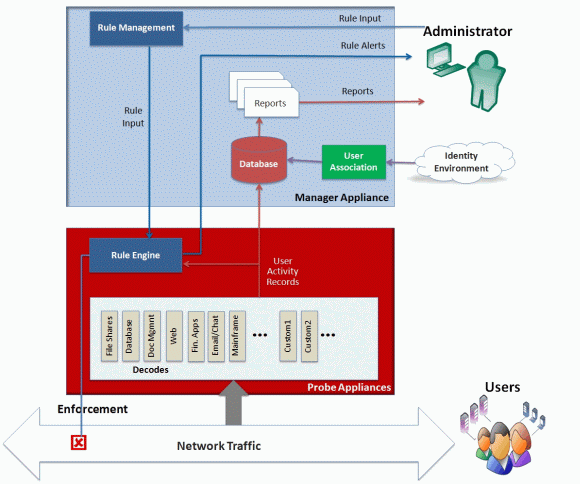If an IT organization set out today to deal with network and systems management on the one hand, and security and compliance on the other, chances are they wouldn’t come up with three separate approaches.
But given the fact that network, systems, security and compliance management have all pretty much evolved separately from one another, we’re confronted with four different paradigms for managing IT that in many cases are redundant to one another.
PacketMotion CEO Paul Smith says the time to truly unify network, systems, security and compliance management is at hand in the form of a set of appliances that capture all the metadata related to these activities in one place.
Although PacketMotion focuses today primarily on compliance management, or what Smith prefers to call user activity management, the PacketMotion CEO says that company is increasingly being asked to make the information its appliances capture available for network and systems management purposes.
Today the company rolled out a PacketSentry 4.0 offering, which adds the ability to synchronize with Microsoft SQL Server databases as well as Unix and Linux servers and the ability to virtually segment user access based on their role in the organization. That latter capability is critical in terms of increasing the overall sophistication of managing user access across the network, Smith said.
The concept that one set of appliances could capture all the relevant metadata in the enterprise might take a more than a few IT people back. But when you think about it, the fact that we have four different management paradigms for systems, network, security and compliance management makes no sense, especially in an era where IT organizations are trying to do everything they can to reduce costs.
In short, there may be no better time than the present to take a more holistic approach to managing IT. By definition, enterprise IT should be a whole lot less dependent on trying to reconcile silos of management products that evolved out of various point products that ultimately only serve to make managing enterprise IT more complex and expensive than it really needs to be.



